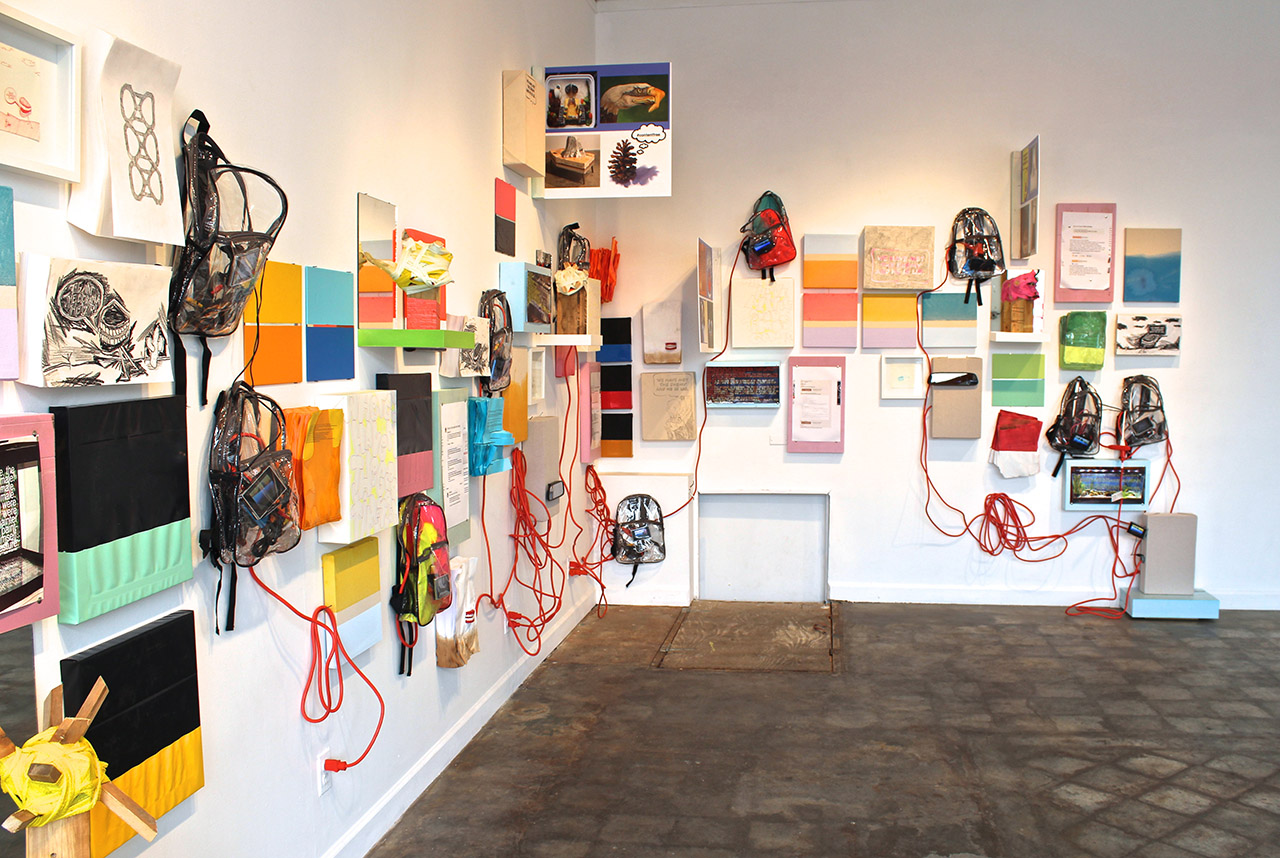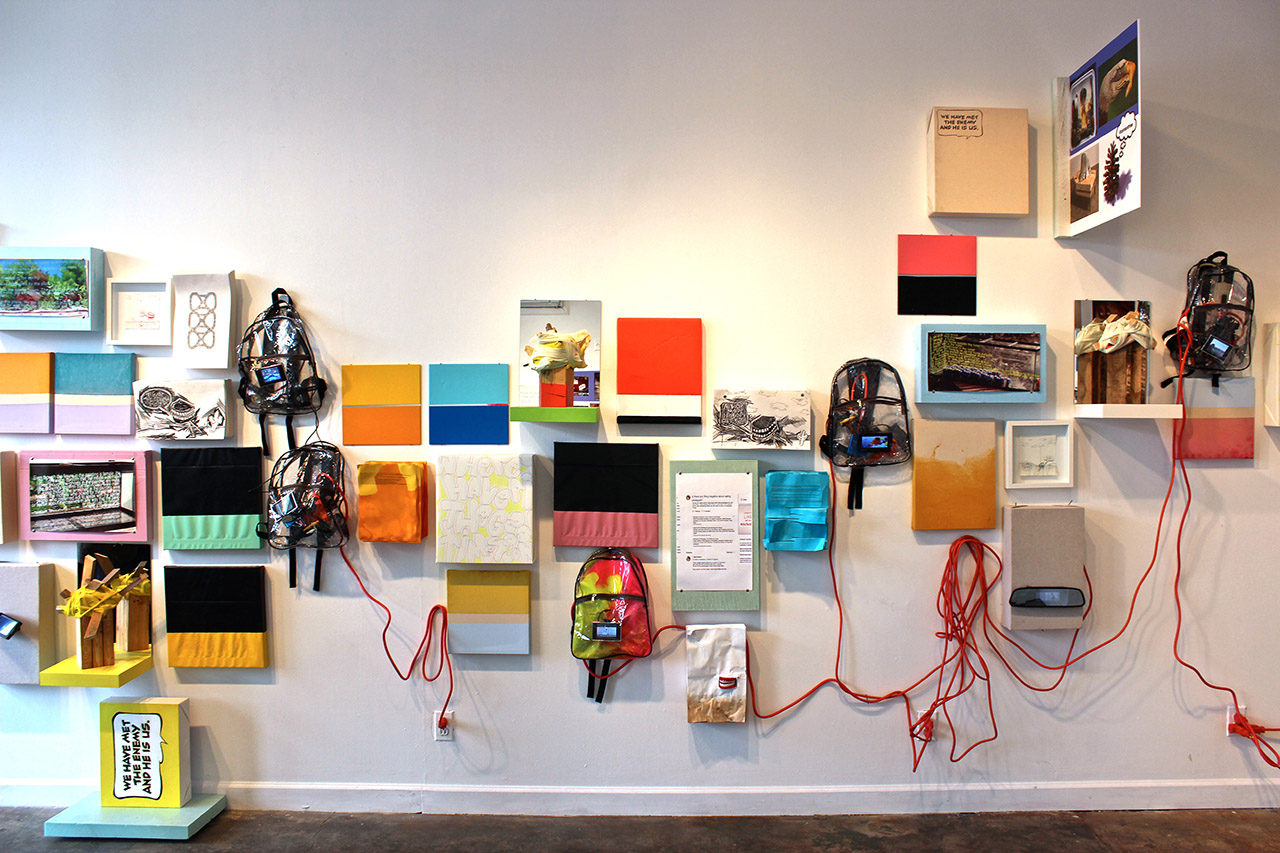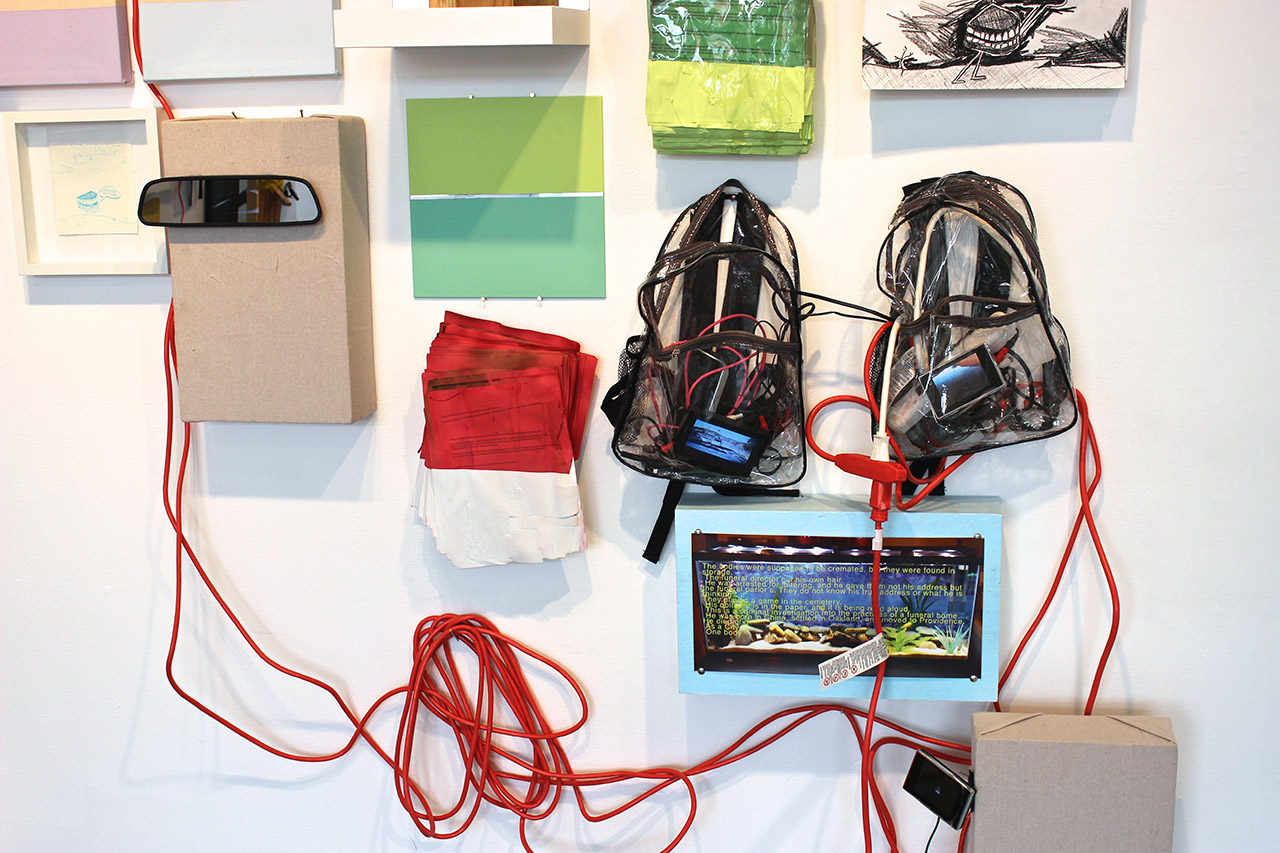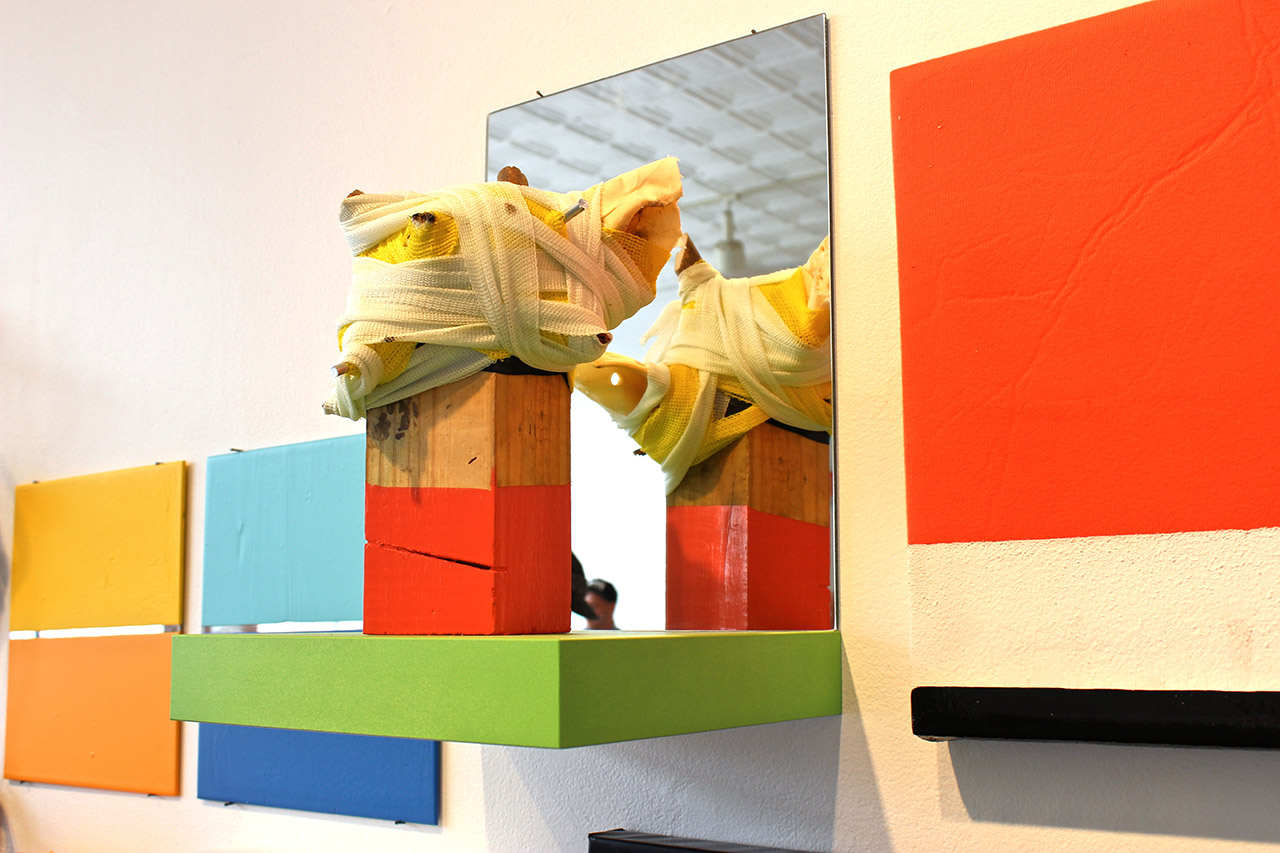
Young World & Co. weave philosophy and mysticism in Public Pool show in Detroit
Above: “Mumbo Jumbo” at Public Pool. Photos by Rosie Sharp.
“Remember to serve your own loas.” That’s the advice given to a couple of the central characters in Ishmael Reed’s intensely discursive work of literary collage, “Mumbo Jumbo.” Not incidentally, “Mumbo Jumbo” is also the title of the most recent show at Public Pool in Hamtramck, Mich., a collectively-run gallery whose head curator, Steve Hughes, is a Knight Arts grantee.
The show is the creation of four artists who work so closely together as to be at times indistinguishable. Ben Hall and Andrew Mehall are the organizational core of the alternative gallery Young World, which sits just on the Detroit side of the Eastern Hamtramck border, and uses its 6,000-square-foot ex-industrial space as a proving ground for artists ready to tackle the challenges of scalability. Hall is also partners with the show’s third participant, Jason Murphy–together they run the popular Eastern Market eatery Russell St. Deli, which is known for its progressive business model as much as its culinary styling. Murphy is a primary interlocutor with Mehall and Hall, as is their fourth, the East Coast-based Elliott Stevens, who contributes written content and collaborative efforts to the group from afar.

“Mumbo Jumbo” at Public Pool.
All of which has very little to do with loas–a type of spirit entity within Haitian Voodoo practice, thought to be the intermediary between the ultimate higher power and humanity. That is, until you consider that the “Mumbo Jumbo” installation is conceptually rooted in Reed’s text, which in turn is reimagining (or, one might argue, correcting the inaccuracies of) the cultural reckoning of art through the ages. Reed assembles a gripping narrative, jumbling together fiction, images, reclaimed history, and more than 100 cited academic texts, in a work that reframes the racial politics of art history.
The Young World crew, in turn, has translated this work of literary collage back to a visual medium, leaving the walls of Public Pool densely packed with roughly 80 separate pieces (each painstakingly and somewhat comedically attributed to a particular artist in the gallery guide). The show could better be seen as a rhizome—a philosophical model outlined in the text “A Thousand Plateaus” by Gilles Deleuze and Félix Guattari. In botanical terms, a rhizome is a segmented root plant, any segment of which can give rise to a new plant (a common example is ginger root); in Deleuze and Guattari’s model (which is in itself a rhizome, as the text is arranged into sections that may be approached in any order), it is an “image of thought” that allows for a multiplicity of trajectories. Both of these definitions apply to the efforts of the Young World crew, which seeks to create generative models within the art world that propagate themselves by dissemination.
Which, finally, has everything to do with loas. There is a pantheon of well-known loas, identifiable to their human worshippers via distinct personality traits and preferences. Much like the gods of Greek and Roman mythology, loas have very human appetites, and practitioners of Voodoo are fastidious in the care and feeding of the loas that they serve. In return for these tributes, loas potentially offer power or rewards—but much like mischievous genies in lamps, their nature can be two-sided if invoked carelessly.

“Mumbo Jumbo” at Public Pool.
In addition to the established set of loas, there are opportunities for the invocation of new loas, and within the narrative of “Mumbo Jumbo” (the book), a new loa is created that can be fed via radio (a relatively new medium in the 1920s setting of the story). Like any good rhizome, the book about creating a new fictional loa has in itself created a “loa of fiction,” called Mumbo Jumbo. In so titling their installation at Public Pool, Young World is feeding that loa, even as they give rise to yet another loa, one called, “We Have Met The Enemy And He Is Us”–a phrase borrowed from the comic strip “Pogo” and repeated many times throughout the work on display.
The work itself is a collection of dozens of canvases bearing tonal studies (a watermark of Murphy’s work, which is deeply preoccupied with the signifiers of color); video segments installed in clear plastic backpacks and stacks of printer paper imprinted with computer code and puddles of spilled varnish (by Mehall); printouts of emails and chunks of writing mounted on backing boards (Stevens); and wooden sculptures wrapped in dyed medical tape posed before mirrors, canvases depicting Pogo, the loa, and a set of walking false teeth that is a recurring motif for Hall.

“Mumbo Jumbo” at Public Pool.
Collectively conceived boards that juxtapose four images on each side jut at right angles from the 2D plane of the wall, a commentary on semiotic learning as practiced by college football teams, most famously the Oregon Ducks. No effort is made to conceal the tangles of orange extension cables powering the video feeds that run within the transparent backpacks and are projected internally through mounted rearview mirrors—they form the visual suggestion of informational flow and complication.
All told, it’s extremely sophisticated stuff, and we expect no less from Young World, which presents densely layered and exceptionally intense work—their own and that of other artists—on the regular. There are, perhaps, some ethical questions surrounding the invocation of a loa in the service of an art show, particularly because within the context of Voodoo, loas are known to sometimes express themselves via possession of human hosts.

“Mumbo Jumbo” at Public Pool.
None of the Young World crew has proclaimed themselves a houngan–an ordained minister of Voodoo, whose practice is thought to be firmly within the side of the right. By default this makes them potentially bokors—renegade practitioners for hire, who are said to serve the loa ‘with both hands,’ which is to say, for good or evil. Whatever the loas, those being served in this case are inarguably their own, and Young World has come with a stunning demonstration in the power of translating ideas across media. The compelling nature of this presentation stands, whether their execution is authentically mystical or simply philosophical.
Recent Content
-
Artsarticle ·
-
Artsarticle ·
-
Artsarticle ·

